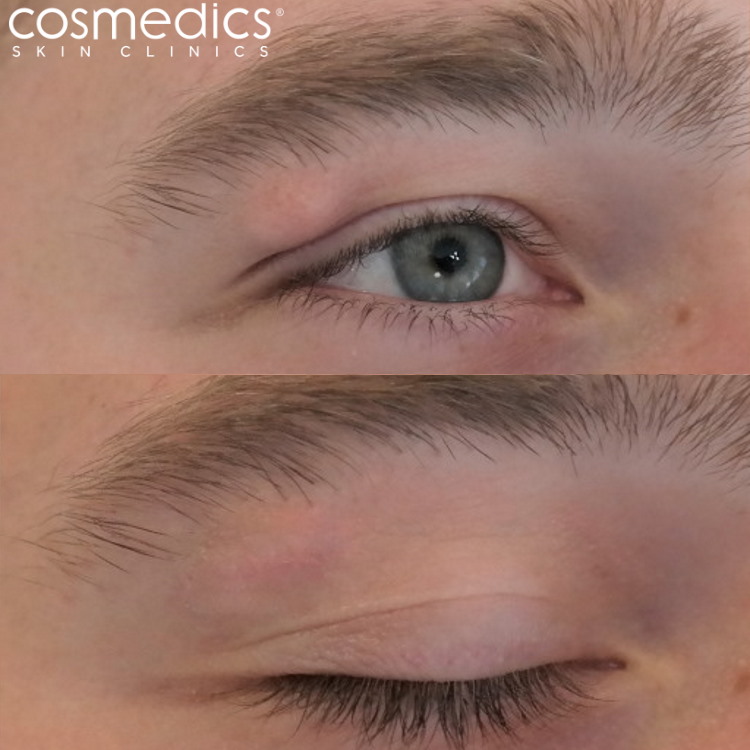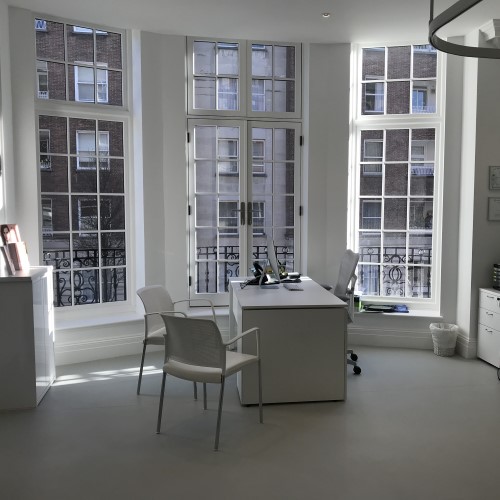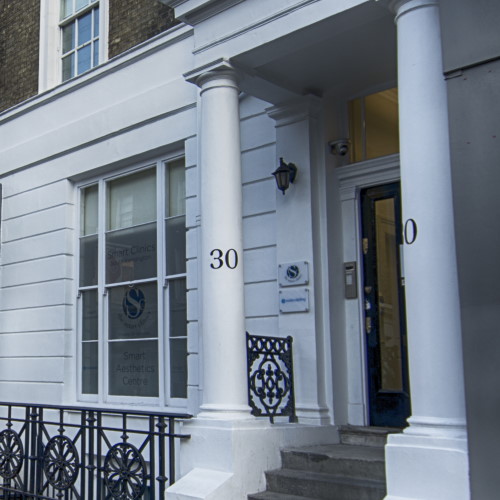Eyebrow Cyst Removal
What is a cyst
Skin cysts appear gradually but tend to get bigger over time. They can appear anywhere on the face or body. One particular area where you may get a cyst is the eyebrow. These pea-shaped pockets of tissue can form at or beneath the outer section of the forehead and fill with pus, fluid, or skin debris.
Cysts are painless. When there is a cyst in an area of hair growth, such as the eyebrow, it can be quite noticeable as the cyst stretches the skin and can protrude between the hair follicles. The raised dome skin tends to be quite smooth to the touch.
How are eyebrow cysts formed?
Cysts tend to form around blockages. One reason they’re common on the eyebrows is due to the grooming. Tweezing, shaving, waxing, or plucking your eyebrows could result in ingrown hairs, which can trap bacteria, dirt, and dead skin cells inside the hair follicles. This obstruction can be bothersome and lead to minor skin irritation, infection and/or cyst formation.
What types of cysts are formed?
Eyebrow cysts may be epidermoid or sebaceous cysts. The types of cysts are not the same. Epidermoid cysts are more prevalent than sebaceous cysts.
Epidermoid cysts
Epidermoid cysts are noncancerous bumps that appear beneath the skin but are most common on the face, neck, and torso. They are small, slow-growing, and often painless.
Sebaceous cyst
Sebaceous cysts form around hair follicles when the sebaceous glands become blocked, trapping keratin fluid. They can be uncomfortable to touch especially if they become inflamed or infected.
The main problems with cysts are aesthetic concerns (appearance) or practical issues (catching on clothing etc). However, if the cyst is uncomfortable, bursts, or becomes infected; then it can become a medical issue and you should see a doctor to get it properly treated.
What is the most common type of cyst on the eyebrow?
Periorbital dermoid cysts are the most common type of eyebrow dermoid cyst. This type of cyst develops on the outer edge of one of your brows.
At what size does an eyebrow cyst need surgery?
The NHS tends to view cysts as a cosmetic issue unless they are infected or very large. However, doctors and surgeons at Cosmedics Skin Clinics can remove cysts before they become such a problem. Early removal is best as smaller cysts leave smaller scars after removal. However, we have also removed some very large cysts that had been left untreated for years.
What can happen if an eyebrow cyst is left untreated?
If you do not treat an infected eyebrow cyst, it can spread to the surrounding tissues, resulting in cellulitis. In the worst-case scenario, infection of the bloodstream.
Thankfully, the majority of cysts are simply bothersome lumps and don’t present any immediate medical risk. If you leave a cyst untreated, the most likely outcome is that it will continue to get bigger and more noticeable.
Can eyebrow cysts be cancerous?
The majority of skin cysts are harmless and do not cause any problems. Although exceedingly rare, some eyebrow cysts may be cancerous, in the same way as some sebaceous or epidermoid cysts. If our doctors have any concerns, they’ll recommend histology (testing) after removing the cyst. This is carried out at an expert independent testing company.
Can I remove a cyst on my eyebrow myself?
Do not attempt removing an eyebrow cyst or any other kind of cyst on your own. This is a minor surgery procedure and should be carried out in medical facility using sterile instruments by a trained doctor or surgeon.
Why should an eyebrow cyst be removed by professionals?
Eyebrow cysts are usually not cancerous, so cyst removal is a relatively straightforward procedure. However, it should only be performed by trained and experienced medical professionals.
Eyebrow cyst removal is carried out under local anaesthetic to ensure that it is pain-free throughout. The doctor will make a small incision using a scalpel and will ensure that the cyst sac is fully extracted in order to prevent it from returning. They will then close the wound using a few neat stitches.
Is eyebrow cyst removal surgery a serious procedure?
Eyebrow cyst removal is classed as minor surgery. It is carried out in clinic using only local anaesthetic. You may not even need painkillers when the anaesthetic wears off, but any discomfort can be managed with paracetamol/ibuprofen which are readily available in supermarkets or chemists.
Patients can return straight home or to work afterwards. There will be a few aftercare guidelines, for example, avoiding swimming, hot saunas or vigorous exercise for a few days while the wound heals. These will be explained fully in your appointment.
Why go private to get your eyebrow cyst professionally removed
Cyst removal on the NHS is not readily available, as the NHS now classes many cysts as a cosmetic issue unless they are infected or very large. If you do qualify, you may have to wait a while. If you go private, there are no waiting lists at all. You can be seen without referral so you don’t need to bother your doctor at all. There’s no need to wait until the cyst is big enough or inflamed, cysts can be removed at any size.
Why choose Cosmedics for eyebrow cyst removal
By making clinical treatments affordable in a welcoming and professional environment, Cosmedics Skin Clinics has become a leading destination for skin treatments. All treatments are carried out by doctors and surgeons who have extensive experience in carrying out minor surgery on skin lesions. They offer long appointments so their doctors will often be able to remove the cyst during the same appointment. All treatments are pain-free thanks to local anaesthetic and the team excel in minimal scarring results, thanks to their techniques and skill.

MBBS

FEBOPHTH L7CERT(AESTH)

MBBS

MBBS(Lond) BMedSci MRCS(Eng) FRCS(Plast)

MBBS, FRCS(Plast)

MBBS PhD

MBChB

MBBS

MD
Dermatologist
Get In Touch
Please fill in your details and our skin advisors will call you back to give you more information.
You can also add an optional short message.
[elfsight_whatsapp_chat id=”1″]
How much does it cost to remove a cyst UK?
The treatment will generally last around 30 minutes and it is carried out under local anaesthetic. The cost for the removal of a cyst by surgical excision starts from £500. The cost for medium cyst is about £750 and larger cysts £850. The exact cost will be given when the doctor assess the cyst before your procedure.
What can happen if a cyst is left untreated?
Cysts grow with time and can become uncomfortable and a nuisance that means people become more self-conscious about them. If a cyst is on the face ideally you want to remove them when they are small so any scar will be less. If they are on the body or scalp when they reach 2-3 cm in size you would ideally time to remove them so any scarring is minimal.
If left untreated, benign cysts can cause complications including infection; where the cyst fills with bacteria and pus and becomes an abscess which leads to be a bigger wound and more scarring.
How do I know if it’s a cyst?
It can be difficult to tell whether a lump is a cyst or something else that might need treatment. Sebaceous cysts can be confused with lipomas that often sit deeper in the skin. These are also harmless and can be removed if they are bothersome.
It can be very difficult to self-diagnose a cyst, as there are so many types. Our doctors are expert in diagnosing and treating all sorts of lumps and bumps, blemishes and lesions. As well as cysts and lipomas, we also see and treat moles, skin tags and warts.
The best way to find out more is to book a face to face consultation with one of our experts. You’ll get a proper diagnosis as well as advice about treatment options.
What scar can I expect after a cyst removal?
Our doctors use micro excisions where possible to any scarring is kept to a minimum and heal quickly.
Can I shower after cyst removal?
You can wash and shower, but be careful to keep the area dry for the first 1-2 days. Avoid long baths for 7 days.
What should I expect after facial cyst removal?
You will be given specific instructions regarding wound care and dressings in your appointment.
There is usually a dressing applied after facial cyst removal, to protect the wound while it starts to heal. You will be given some additional dressings to go home with and can replace the dressing if needed. Be gentle when removing any dressings. Soaking in some warm water (not overly hot) can help loosen it up if stuck. After removing the dressing, the wound itself can be cleaned with some soapy water, then dried.
If you are using steri-strips, then you reapply by cutting the strips in half and applying across the wound. If required, the shower proof dressing is then put on top.
Your doctor/surgeon will advise how long you need to use dressings, steristrips and shower proof layers.








